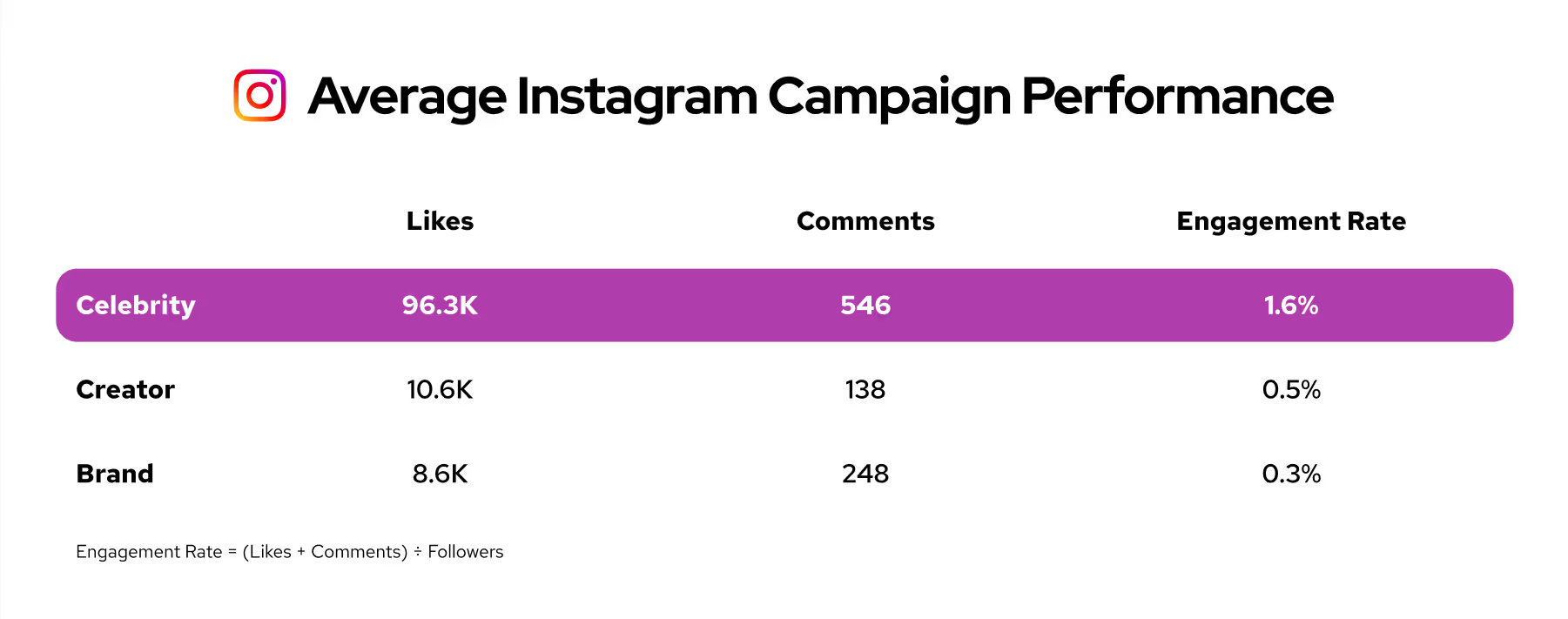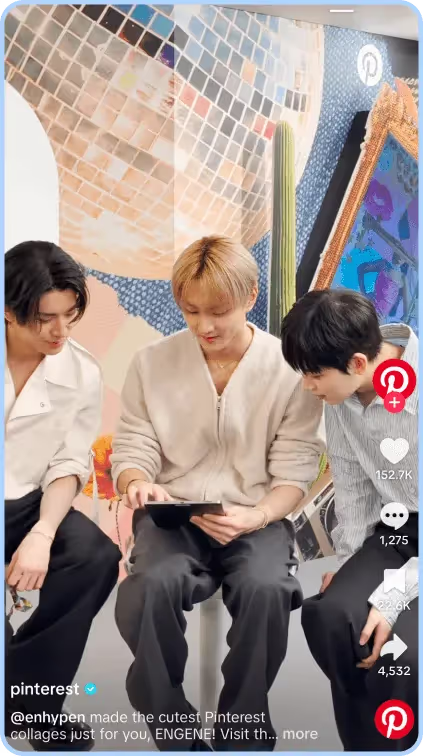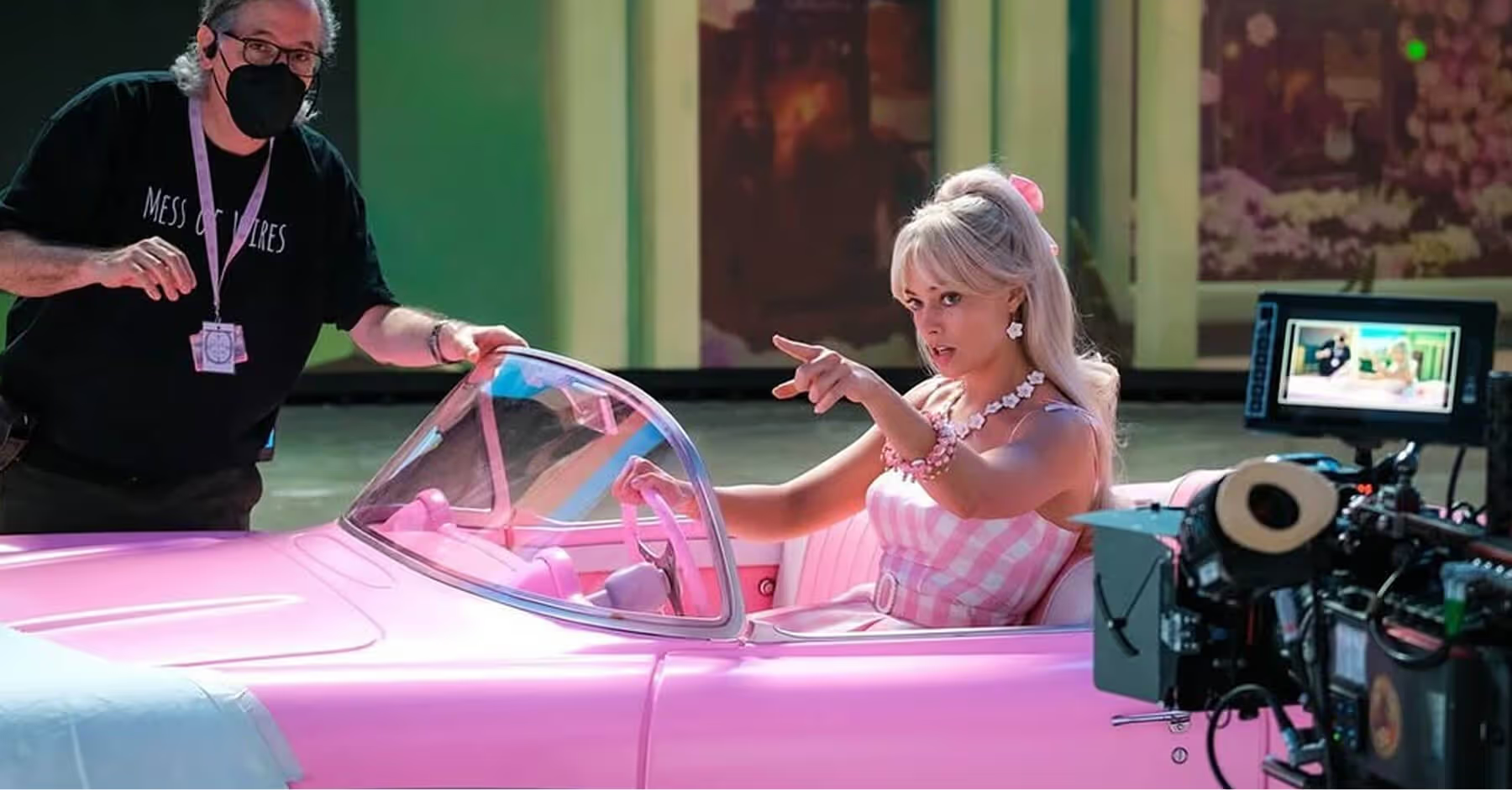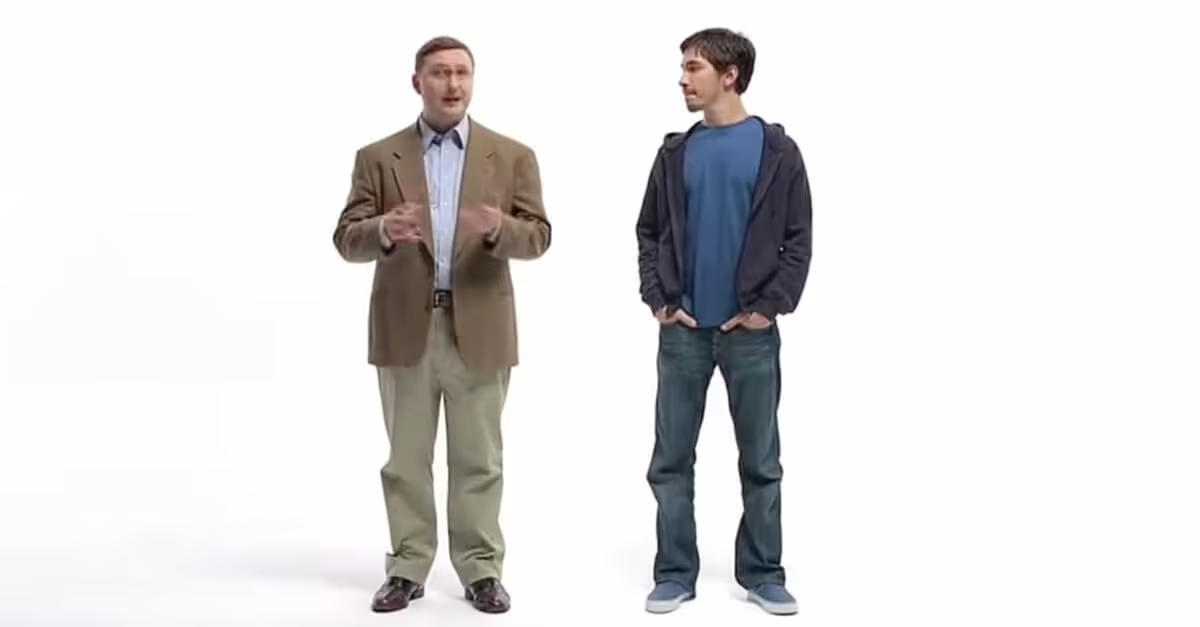Celebrity vs. Influencer: Which Campaign Drives More Engagement?
Influencers or celebrities? Discover who really drives the most social media buzz and engagement

Contents
Celebrity Campaign Performance vs. Creator Campaign Performance on TikTokCelebrity Campaign Performance vs. Creator Campaign Performance on InstagramShould Your Brand Work With Influencers or Celebrities?Celebrity Marketing Campaigns: Pros and ConsInfluencer Marketing Campaigns: Pros and ConsHow To Choose the Right Celebrity for Your Brand and ProductCelebrity x Brand Partnerships Examples Celebrity Brand Partnership FAQsIf you’re one of the fortunate brands with a generous marketing budget, chances are you’ve asked yourself during at least one campaign: Is this celebrity partnership really worth the cost? On the flip side, maybe your luck has run out — your budget has taken a hit, and those once successful celebrity endorsements are suddenly out of reach.
Whichever camp you fall into, we’re diving into the data to uncover whether star power truly delivers or if your campaigns can be just as effective by investing in the right influencer partnerships.
TL;DR:
- Celebrity campaigns are worth the investment.
- Celebrity campaigns have a 30% higher engagement rate vs. influencer campaigns on TikTok.
- Celebrity campaigns have a 220% higher engagement rate vs. influencer campaigns on Instagram.
- Can’t afford a celebrity endorsement? Creators still deliver, generating higher engagement than brand-only campaigns on both Instagram and TikTok.
Celebrity Campaign Performance vs. Creator Campaign Performance on TikTok
Let’s start by breaking down campaign performance on TikTok based on an analysis conducted by our Senior Customer Insights Manager, Quinn Yung. The data set includes 112 brand campaign posts shared between 2024 and 2025 across varying industries.
The analysis compares the engagement rate of one piece of creator-led campaign content and one celebrity campaign post per brand. To establish a baseline, we also examined standard brand posts that featured neither a creator nor a celebrity.
The campaigns analyzed covered a wide range of objectives from new product launches and brand collaborations to community initiatives, CSR (corporate social responsibility) efforts and broader brand awareness goals.
Here’s what the numbers reveal:
Campaigns featuring celebrities drive, on average, a 30% higher engagement rate than those featuring creators on TikTok.

That big chunk of social media marketing budget you’re allocating to A-list partnerships? It's paying off. Especially if your target objective is brand awareness. Not only do celebrity-led posts rack up significantly more views (an average of 7.5M per post vs. 943.5K for standard brand posts), but they’re also shared more, talked about more and maintain the highest engagement rate overall.
In fact, celebrity-led campaigns generate roughly 8x more video views on TikTok than brand-only content.
If your budget doesn’t stretch to accommodate celebrity endorsements, don’t worry. Creators and influencers offer a strong alternative. While they may not drive quite as much reach as celebrities, they outperform brand-only content across every metric, including likes, shares, comments and views.
And while creator partnerships aren’t always cheap, they’re typically more affordable than celebrity campaigns, making them a smart middle ground for performance-driven strategies.
Celebrity Campaign Performance vs. Creator Campaign Performance on Instagram
If you’re already investing in celebrity partnerships for your campaigns, chances are you're planning a well-rounded, cross-channel marketing strategy. After all, you're not paying top dollar just to post once and move on. But if you're curious about how that content performs on Instagram specifically, we’ve got the data.
We analyzed 94 Instagram posts from brand accounts between 2024 and 2025. Each campaign featured one of three approaches: celebrity-led, creator-led or brand-only content. The campaigns spanned a range of objectives, including new product launches, high-profile collaborations, brand awareness efforts, community initiatives and CSR campaigns.
Here’s what we found:
On average, campaigns featuring celebrities deliver a 220% higher engagement rate than creator-led campaigns on Instagram.

The difference in likes alone is staggering. On average, celebrity content receives 85.7K more likes than creator content, a massive +809% increase. Compared to brand-only posts, the gap widens even further, with a +1,021% boost in likes.
Of course, not every campaign is designed to go viral. Factors like audience targeting, paid amplification and content format can influence metrics like reach and engagement. But when it comes to sheer engagement power, celebrity endorsements clearly lead the way on Instagram.
Should Your Brand Work With Influencers or Celebrities?
When it comes to building brand visibility and driving results, celebrity endorsements and influencer marketing both have strengths, but they operate in different ways.
- Celebrities = broad awareness, brand association and cultural relevance
- Influencers = engagement, conversions, product education and community alignment
Celebrity endorsements involve partnering with well-known public figures, actors, athletes, musicians or other A-listers to promote a product or brand. These campaigns are rooted in mass appeal and cultural influence. A single post, red carpet appearance or social ad featuring a globally recognized name can create instant awareness, brand identity and cultural relevance. However, that level of visibility often comes with a hefty price tag and less targeted engagement.
Influencer marketing, on the other hand, focuses on individuals who’ve built loyal, niche audiences on platforms like Instagram, TikTok and YouTube. Whether they have thousands or millions of followers, influencers thrive on relatability and trust, often delivering personalized, content-rich experiences steeped in social proof that resonate on a deeper level.
And their impact shouldn't be underestimated. A single viral TikTok from a creator can rival or even outperform traditional media placements in both reach and speed, proving that influence isn’t just about fame, it’s about connection.
In recent years, the line between influencer and celebrity has blurred. Many top creators now hold near-celebrity status, offering both broad reach and authentic engagement. These hybrid partners give brands more flexibility, especially when balancing top-of-funnel awareness with bottom-line results.
Ultimately, the choice between celebrities and influencers comes down to your strategic goals. If you're aiming for brand prestige and mass visibility, a celebrity partnership may make sense. But if your focus is on driving conversions, educating consumers or building community through authenticity, influencers are often the more effective and cost-efficient path.
Celebrity Marketing Campaigns: Pros and Cons
Celebrity marketing campaigns have long been a staple of big-brand strategy. When done well, a celebrity endorsement can catapult your brand into the cultural zeitgeist. But like any high-stakes move, it comes with trade-offs. Here’s a breakdown of what you need to consider:
The pros:
- Massive reach - Celebrities bring built-in audiences in the millions. One appearance or post can generate a flood of impressions, clicks and awareness. Especially when paired with traditional media or integrated into your PR strategy.
- Elevated brand image - Pairing your product with a well-known face can instantly elevate its perceived value. This positions your brand to compete at a more premium, aspirational level.
- Media coverage and buzz - Celebrity partnerships often earn organic press coverage, boosting your brand’s visibility beyond paid channels. The ‘halo effect’ can extend into earned media, influencer reactions and social conversation.
- Speed to awareness - If you need to make a big splash for a product launch or market entry, a celebrity partnership can accelerate reach and recall faster than most other marketing tactics.
The cons:
- High cost - Celebrity endorsements don’t come cheap. Top-tier talent can command hundreds of thousands or even millions of dollars for a single campaign, which can quickly drain budgets, especially for emerging or mid-size brands.
- Authenticity concerns - Today’s audiences are highly attuned to authenticity. If the celebrity doesn’t have a real connection to the product, the campaign may feel disingenuous or overly commercial, resulting in low engagement.
- Brand misalignment - A mismatch between a celebrity’s image and your brand values can lead to confusion or, even worse, backlash. Subtle inconsistencies can erode trust with your audience.
- PR risk - Celebrity reputations can change overnight. If your spokesperson becomes involved in controversy, your brand may be forced to respond or sever ties, sometimes at a significant cost.
Celebrity campaigns are powerful tools for awareness and positioning, but they require high investment, careful vetting and a strong alignment with your brand’s identity.
Influencer Marketing Campaigns: Pros and Cons
Influencer marketing has grown from a trend to a proven tactic for brands across many industries. With creators now playing a central role in content discovery and purchasing decisions, influencer campaigns offer agility, authenticity and performance. Especially when paired with the right strategy.
The pros:
- High engagement - Influencers tend to have highly engaged communities, especially nano and micro influencers. Their followers trust their opinions, making them ideal for product education, reviews and conversions.
Authenticity - Influencer content often feels organic and relatable, rather than overly produced or salesy. This peer-to-peer vibe helps cut through ad fatigue and builds stronger brand affinity. - Cost-effective and scalable - Compared to celebrity endorsements, influencer campaigns are generally more budget-friendly. You can start small, test multiple creators and scale what performs while keeping your spend under control.
- Niche targeting - Influencers and creators allow brands to reach specific social media demographics or interest-based communities. They help connect directly with the right people, no matter the industry.
- Content creation value - Influencers double as creators. Brands often repurpose influencer content across channels and campaign types, such as paid ads or website banners to help maximize the value of each collaboration.
The cons:
- Variable quality - Not all influencers are great storytellers. Inconsistent content quality or messaging can water down your brand narrative if you’re not working closely with creators.
- Fake followers and engagement - While many influencers have real, loyal audiences, some still inflate their metrics with bots or engagement pods. Vetting your partners is crucial to avoid wasted spending. (Need help evaluating potential partners? Check out our Fake Followers Checklist for a quick and effective audit.)
- Limited individual reach - A single micro or nano influencer may not move the needle on awareness alone. For large-scale impact, you’ll need to run multi-creator campaigns that require coordination and tracking.
- Disclosure and FTC compliance - Ensuring that influencers disclose paid partnerships properly can be a compliance headache, but it's essential for transparency and trust.
Influencer marketing offers flexibility, trustworthiness and performance, especially when engaging niche communities. But success depends on careful vetting, hands-on management and often a multi-partner strategy to achieve meaningful scale.
How To Choose the Right Celebrity for Your Brand and Product
If you’ve decided that a celebrity partnership aligns with your brand strategy and you have the budget, the next step is choosing the right one. The most successful celebrity-brand collaborations are built on shared values, audience fit and authenticity.
Here are the main factors to consider when selecting a celebrity partner:
- Brand awareness - Looking to increase general visibility? Choose a celebrity with high media exposure and broad name recognition.
- New product launch - Pair with someone whose public persona complements the product’s positioning (e.g., wellness-focused celebrities for fitness products).
- New target demographic - Consider a celebrity with influence in the community or age group you’re trying to reach.
- Authentic brand affinity - Does the celebrity already use or publicly endorse similar products? Partnerships based on genuine affinity feel more credible.
- Cultural fit - Ensure that the celebrity’s image and values align with your brand’s tone, core values and audience expectations.
- Budget - Even among celebrities, costs can vary dramatically. Make sure the value (measured by exposure, earned media and long-term association) matches the spend.
- Content expectations - Some celebrities prefer polished, produced campaigns while others are open to more casual, social-first content. Align on content style from the start.
The right partner isn’t always the biggest name. It’s the one that best aligns with your goals, your brand story and the audience you’re trying to reach.
Celebrity x Brand Partnerships Examples
Celebrity partnerships continue to be one of the most powerful ways to capture attention. From legacy athletes to pop icons, brands are tapping into star power to create memorable campaigns that go beyond product promotion. They tell a story, build aspiration, and when the stars align, can even go viral in the process.
Below are a few standout examples of how brands have successfully leveraged celebrity influence across different channels and audience segments:
Erewon X Kacey Musgraves: Blending Wellness With Star Power
Erewhon has become synonymous with celebrity culture and aspirational wellness. Its Instagram collaboration with Grammy-winning artist Kacey Musgraves is another smart step in blending lifestyle branding with cultural influence. This partnership centers around The Deeper Wellness Smoothie, a limited-time menu item available across Erewhon locations.

The campaign, visually aligned with Kacey’s signature earthy, retro-cool aesthetic, features the singer holding the vibrant blue-green smoothie in a cozy, green knit outfit. But this collab goes beyond just visual vibes. It also includes a give-back component. With every smoothie purchase, Erewhon donates to @altadenagirls, a nonprofit organization, further rooting the campaign in purpose-driven marketing.
Engagement Rate: 16.43%
This engagement rate is exceptionally high. A clear indicator that Erewhon’s audience responds enthusiastically to celebrity collaborations that are visually compelling, purpose-driven and on-brand.
Why it works:
- Celebrity-fueled aspirational appeal: Musgraves’ blend of mainstream fame and indie credibility makes her an ideal brand ambassador for labels built on exclusivity, cultural cachet and a health-forward ethos.
- Limited-time drop strategy: Just like in the fashion industry, scarcity fuels demand. Tying the campaign to a temporary offering keeps it fresh and Instagrammable.
- Lifestyle alignment: Kacey isn’t just endorsing a product; she’s embodying a lifestyle that Erewhon customers aspire to. The campaign sells more than a smoothie; it sells a mood.
Pringles x Adam Brody: A California Crunch Tour in Every Bite
In this playful TikTok campaign, Pringles partners with actor Adam Brody to deliver a snackable twist on California cuisine. The classic chip is turned into hors d'oeuvres-inspired flavor flights. Seated at a table with fresh ingredients at hand, Brody walks viewers through three distinct Pringles combinations, each creatively topped with different fresh ingredients.

The format is short, fun and deliciously unexpected. It is perfectly suited for TikTok’s blend of humor, food experimentation and personality-driven content. Brody's laid-back energy, combined with savory crunch and flavorful toppings, makes this feel less like an ad and more like a hangout with your foodie friend.
Engagement Rate: 13.6%
This video significantly outperforms our calculated average celebrity-led TikTok campaign benchmarks (5.6%). With 42.6 million views, it stands out as one of Pringles’ most successful TikToks to date. It is a great example of branded content that’s both viral and creatively original.
Why it works:
- Celebrity with nostalgic appeal: Adam Brody brings early-2000s cult-favorite energy to a Gen Z and millennial platform. His presence is familiar, charming and just offbeat enough to feel fresh again.
- Snackable content, literally: Using Pringles as a base for flight-style creations is unexpected, highly visual and easy to replicate. A winning combo for food-related TikToks. The California theme ties in naturally, especially with Brody’s roots in the state and his iconic role on The O.C., making the concept feel authentic rather than forced.
- Conversational, not commercial: The tone is relaxed and unscripted. Brody talks like he’s just hanging out, not pushing a product. It’s a style that fits perfectly with TikTok’s authenticity-first approach to content.
Pinterest X ENHYPEN: Collaging Culture With K-Pop Influence
In a clever blend of digital creativity and global fandom, Pinterest partnered with South Korean boy band ENHYPEN to spotlight its collage-making features, putting a Gen Z twist on DIY expression. The campaign features the seven-member group introducing themselves in a TikTok video and creating their own Pinterest Shuffle collages using photos, denim textures and glitter overlays.

The campaign’s aesthetic is unmistakably Y2K meets modern K-pop. It's full of sparkles, rhinestones, layered denim and scrapbook-style visuals. It’s playful, personal and deeply aligned with how younger audiences use Pinterest: not just for planning, but for mood-boarding their interests and style.
Engagement Rate: 25.9%
This is an extremely high engagement rate by TikTok standards. For context, anything above 10% is considered strong, especially for brand-led or partnership content. An almost 26% engagement rate suggests that this campaign was not only well-received but also highly engaging and shareable among fans and platform users alike.
Why it works:
- Gen Z authenticity: Collaging is one of the most accessible forms of self-expression, and ENHYPEN brings authenticity and fan appeal to a format that thrives on customization.
- Cultural relevance: K-pop idols are cultural icons. Their influence extends far beyond music. Pinterest tapped into that cultural cachet to make its tools feel current and cool.
- Platform-native content: By promoting the collages through TikTok, a platform where both Pinterest content and K-pop flourish, the campaign meets its audience exactly where they are.
Celebrity Brand Partnership FAQs
What is the average return on celebrity endorsement?
The average return on investment (ROI) for celebrity endorsement campaigns is approximately 4.5:1, meaning that for every dollar spent, brands can expect to earn $4.50 in revenue.
However, actual performance depends on factors like audience fit, authenticity and campaign objectives. In some cases, a well-aligned influencer campaign may deliver similar or better results at a lower cost.
How much does celebrity endorsement cost?
Costs range widely, from $5,000 to over $1 million per post or campaign, depending on the celebrity’s fame, platform and campaign scope. According to FasterCapital, A-list stars can charge $500K to $10M+ for major endorsement deals, while mid-tier celebrities may cost $50K to $250K. Pricing depends on deliverables, exclusivity and media usage rights.
How do you reach out to a celebrity for endorsement?
Identify a celebrity who aligns with your brand, then contact their agent or manager. They will usually be listed on their website, social media or via platforms like IMDB Pro. Send a short, professional pitch outlining your brand, the opportunity, deliverables and budget, much like what you would in an influencer outreach proposal. For more support, consider working with a talent or influencer marketing agency.





